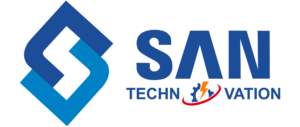Other Valuable Courses
Learn How To Build The Perfect Diet & Meal Plan For Improved Health, Better Weight Loss And More Muscle Gains Hi, I'm Felix Harder fitness and dieting coach and amazon best selling author. My "Nutrition Masterclass" is designed for anyone who wants to get the most out of their diet, no matter if you're an athlete, bodybuilder or simply want to live a healthier life.
- User@123
-
(1)
- 0 enrolled students

Description

Geometric Dimensioning and Tolerancing
Geometric Dimensioning and Tolerancing is a process for defining and communicating design intent, as well as engineering tolerances, to help engineers and manufacturers control differences in manufacturing processes.
It is used in engineering drawings and computer-generated three-dimensional solid models to establish the nominal geometry and its allowable variance. It informs the manufacturing workers and equipment about the degree of accuracy and precision necessary for individually controlled features of the part.
This course is framed to introduce the student to engineering tolerances and principles, covering layout, the entire topic of GD & T symbols, datum requirements, and mainstream modifiers. It is one of the fundamental and essential courses for people who are curious about mechanical engineering. This course comprises advanced topics and offers you a better understanding of GD&T. Well, GD&T is a symbolic language or tool for engineers to perfectly define the geometry of mechanical parts. Learn in what way geometric dimensioning and tolerancing are used in real-world experience, not just in theory. Get advanced in industry-ready skills that are required to perfect the engineering designs and manufacturing process.

Welding
With today’s contemporary technology, there are numerous applications for welding. Welding is a fabrication method that combines materials, typically metals or thermoplastics, by melting the components together and allowing them to cool, resulting in fusion. Welding differs from lower-temperature processes such as brazing and soldering in that it does not melt the base metal.Welding can be done using a variety of different energy sources, such as a gas flame, an electric arc, a laser, an electron beam, friction, and ultrasound. Welding can be done in a variety of conditions, including open air, underwater, and in outer space, during the industrial process.
In this course, you’ll understand nature and get knowledge of the mechanical properties of metal. Discover the fundamentals of welding and its procedures. At the completion of this course, you’ll gain Discover the fundamentals of welding and its procedures, knowledge of the latest advancements in welding technology, and select the ideal welding system for a given application. Understanding the basics of welding is necessary for managers, engineers, production, inspectors, and welders. .

Surface Finish
Surface finish can also be referred to as surface topography or surface texture. The surface’s nature is described by the three properties of lay, surface roughness, and waviness. It is one of the critical components in controlling friction and forming transfer layers during sliding.Surface textures will be isotropic or anisotropic. In some circumstances, stick-slip friction phenomena can be examined during sliding according to the surface texture.
Every manufacturing process creates a surface texture. The process is generally improvised to make sure that the resulting texture is functional. Grinding, polishing, lapping, abrasive blasting, honing, electrical discharge machining, milling, lithography, industrial etching, laser texturing, and other processes are used in the latter process. In this course, we’ll cover the introduction, types of instruments, correlation, and a thorough understanding of surface texture. The objective is to safeguard the metal and enhance the aesthetic side. It is one of the mandatory topics that everyone must become aware of it. Engineers, technicians, and college students can apply for this course.
Please make sure that your product exists and valid for this course
- Duration 04 hours
- Lessons0
- Skill levelAll Levels
- CategoryMechanical Software







